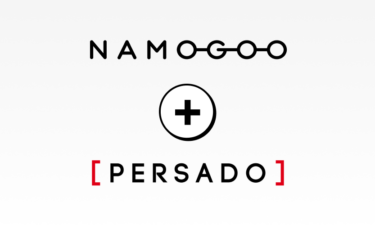For a phenomenon as widespread and costly as ad injection, it’s remarkable that more eCommerce companies haven’t yet realized the massive scale of the problem – or the urgency of confronting it. Injected ads appear during 15% to 25% of online shopping sessions, and they have a significant impact on eCommerce KPIs. Yet many of those affected by them – including both retailers and consumers – don’t understand what injected ads are, how they work, and how they affect business results.
That’s especially remarkable because Google publicized the threat of injected ads nearly five years ago, providing visual examples and detailed statistics. Since then, the threat has become more serious, as eCommerce has continued to grow rapidly.
So, why aren’t people more aware of ad injection today? It’s largely because injected ads fit into a series of blind spots for retailers, shoppers, and other businesses that shape the eCommerce ecosystem. To understand why, we need to understand how injected ads work, how bad actors disguise them, and how consumers relate to them.
Ad injection is a customer-side problem
The most obvious reason eCommerce companies aren’t more aware of ad injections is that they target the consumer’s browser. They do not involve putting a bug on an eCommerce website or otherwise compromising the content of the website. In fact, they don’t directly impact any of the server-side technology that a retailer would have access to.
Instead, ad injections are bundled into many browser extensions, program updates, apps, and other free software commonly downloaded by consumers. Once installed, these injections run on the user’s computer, smartphone, or other digital device – bypassing eCommerce companies and delivering illegitimate ads directly to their customers.
As a result, when a shopper visiting a retailer’s eCommerce website views an injected ad, that ad neither comes from the retailer nor is displayed to the retailer.
In contrast to retailers, shoppers view injected ads extremely frequently. But shoppers don’t usually realize that a given ad is being displayed as a result of ad injections running on their own digital device. That’s often the case both because consumers are largely unaware that the problem of ad injection exists in general and because many injected ads are designed so as not to look like injected ads.
Many injected ads are disguised
The injected ads that plague eCommerce websites have one main purpose: to get a shopper to click and get redirected to another website, in order to enable unscrupulous affiliate marketers to make money at the expense of retailers. And if tricking shoppers enables those bad actors to make more money, that’s exactly what they will do.
In many cases, injected ads are designed to resemble legitimate ads, so as to entice a user to click in the hopes of getting the product they want at a lower price. In other cases, an injected ad will look like a legitimate alert, such as an error message or a recommendation from the user’s operating system. Still other injected ads are invisible until they are clicked, such as an in-text redirect that discreetly changes which URL a given link will lead a user to.
Looking at consumer sentiment, it seems that these disguises are effective. In a survey of more than 1,300 consumers that we at Namogoo conducted, we asked respondents what conclusion they would draw if were visiting an eCommerce website when they saw a pop-up ad promoting products sold by a different online store. Remarkably, only 3% of respondents said they would conclude that the ad was most likely caused by a bug running on their own computer.
Of course, consumers aren’t the only ones fooled by these slickly designed ad injections. These harmful programs are often bundled together with free software, such as a mobile app or browser extension. We have seen that some of this software has managed to get onto platforms such as the Chrome Web Store, where it has been downloaded by many consumers. We have also seen that some ad injectors go to extreme lengths to hide the fact that a given piece of software will inject ads.
In short, there is no question that ad injectors have gotten remarkably good at avoiding detection – which is one of the key reasons there isn’t more awareness of the problem of ad injection. This lack of awareness, in turn, both perpetuates the problem of Customer Journey Hijacking and makes it more damaging for eCommerce companies.
Exposing ad injection is the key to stopping it
Why does it matter that so many consumers and retailers lack a sufficient understanding of the problem of ad injection? First of all, this situation results in consumers continuing to download free software that secretly comes bundled with ad injections. Then, when these consumers wind up viewing injected ads while visiting a retailer’s eCommerce website, they typically blame the retailer instead of the ad injector. In fact, in our consumer survey, 78% of respondents said that if a retailer’s eCommerce website displayed ads from other websites, that would be either “likely” or “very likely” to negatively impact their view of that retailer.
Meanwhile, the business model of ad injections depends on a lack of awareness among retailers – especially because those retailers have the option of deliberately preventing their customers from seeing injected ads.
For those eCommerce companies that do take the time to examine the scale and impact of ad injection, there is plenty of evidence showing how widespread and significant the problem is. Here at Namogoo, we recently published our annual report showing the frequency and results of ad injections in the U.S. and Europe across eCommerce verticals. The result of our analysis of billions of web sessions, the report shows that ad injection increased in frequency over the course of 2019.
In Q4, these ads appeared during 24.31% of desktop eCommerce sessions in the U.S. and 21.34% in Europe, as well as 18.93% of mobile shopping sessions in the U.S and 17.53% in Europe.
Most importantly, the report shows that ad injection remains a significant and costly problem for retailers year-round and across the board – disrupting enormous numbers of customer journeys and reducing online conversion rates.
That should be cause for concern for any company whose success depends on its eCommerce conversion rate.
How widespread and harmful is the problem of ad injection today? To get the latest numbers showing the scale of Customer Journey Hijacking by region and industry, download The State of Customer Journey Hijacking 2019 Benchmark Report.







